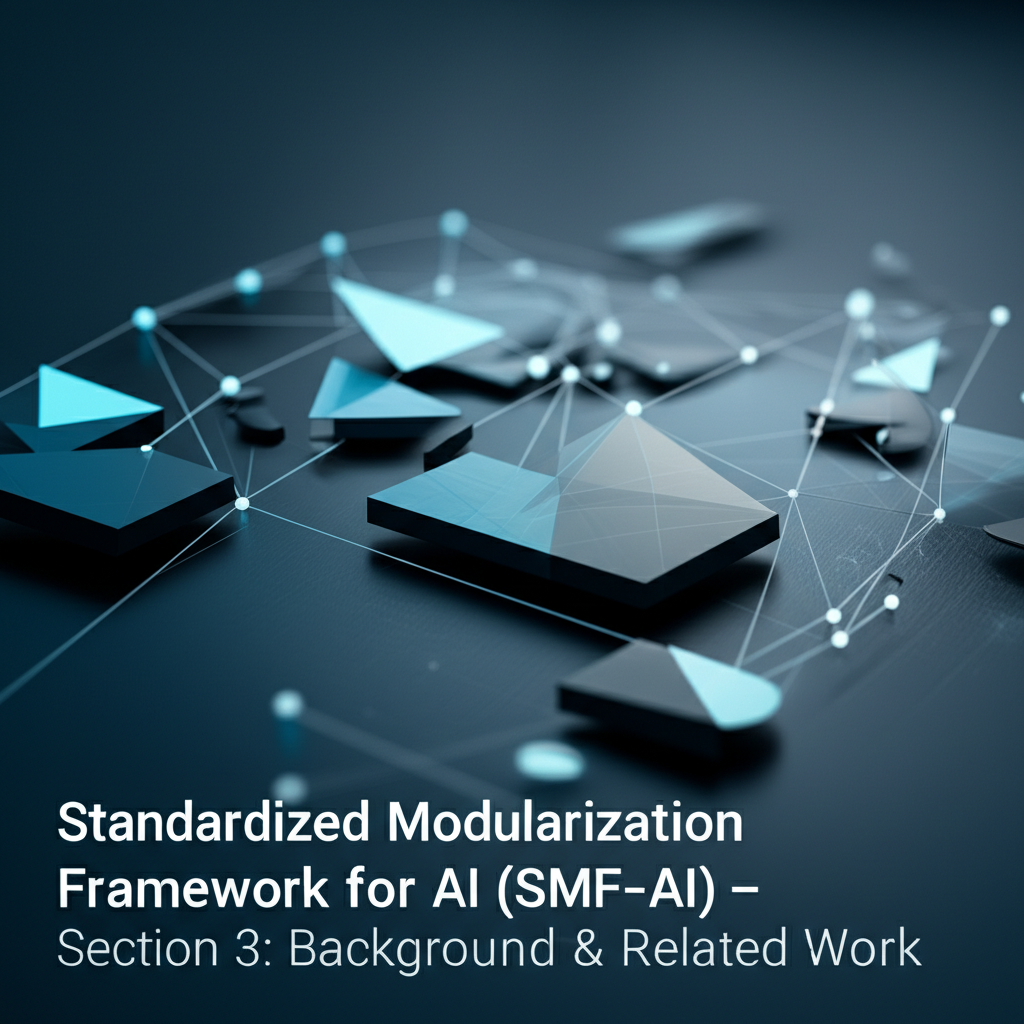## 3. Background & Related Work
### 3.1 Monolithic AI Deployments: History and Limitations
Early AI deployments often packaged architecture, parameters, preprocessing, and execution logic into monolithic binaries or tightly coupled codebases. This approach simplified initial distribution but resulted in brittle systems. Any modification—be it parameter fine-tuning, preprocessing adjustment, or hardware migration—required rebuilding and revalidating the entire stack. This lack of separation impeded scalability, interoperability, and reproducibility.
### 3.2 Existing Partial Standards
– **ONNX (Open Neural Network Exchange)** – Facilitates interoperability by defining a common intermediate representation for model graphs. However, it does not prescribe module boundaries for preprocessing, parameters, or orchestration.
– **MLIR (Multi-Level Intermediate Representation)** – Designed for compiler optimization across heterogeneous hardware, but its scope is primarily execution graph transformation rather than full system modularization.
– **Hugging Face Model Hub** – A distribution platform supporting multiple formats, yet without enforceable lifecycle independence between components.
– **TensorRT Engines** – Provide high-performance deployment for NVIDIA GPUs but remain hardware-vendor-specific.
### 3.3 Lessons from Other Domains
– **OSI Model in Networking** – Separated concerns into layers (physical, data link, network, transport, etc.), enabling cross-vendor compatibility and innovation.
– **Instruction Set Architectures (ISA) in Hardware** – Decoupled software ecosystems from CPU microarchitectures, fostering innovation in both domains independently.
– **Plugin Architectures in Software** – Allowed extension or replacement of system capabilities without altering the core system.
### 3.4 Gap Analysis
While ONNX and MLIR partially address AI model portability and optimization, they do not establish:
1. Formal lifecycle independence between architecture, parameters, preprocessing, and orchestration.
2. Enforceable metadata and schema standards.
3. Mechanisms for secure, reproducible component swapping.
The absence of such a **complete systems-level modularization standard** has left AI ecosystems vulnerable to vendor lock-in, difficult reproducibility, and high maintenance costs. SMF-AI addresses these gaps by providing a prescriptive, interoperable specification for all lifecycle components of an AI system.


























